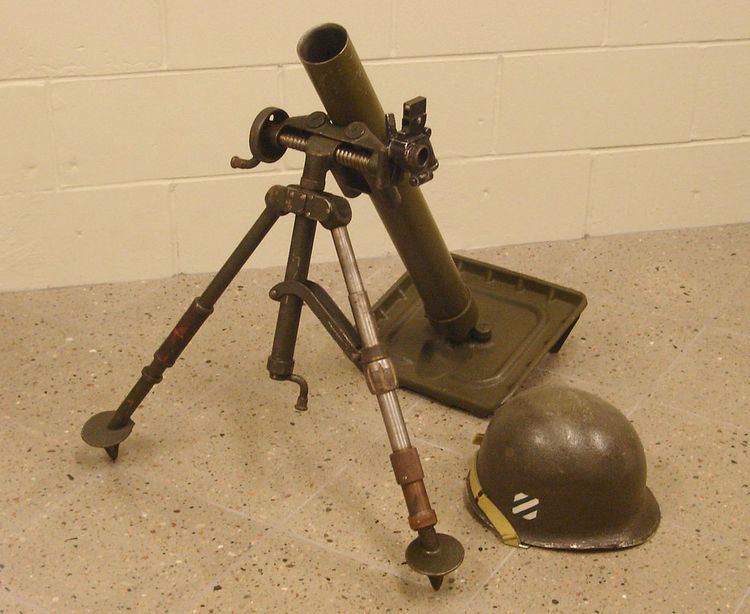Wars Second World War No. built Over 4,900 | Place of origin France Weight 19.7 kg | |
 | ||
The Brandt Mle 1935 60-mm mortar (French: Mortier de 60 mm Mle 1935) was a company-level indirect-fire weapon of the French army during the Second World War. Designed by Edgar Brandt, it was copied by other countries, such as the United States and China, as well as purchased and built by Romania. The mortar continued to be used by France after the war until at least the 1960s.
Description
The Brandt Mle 1935 was a simple and effective weapon, consisting of a smoothbore metal tube fixed to a base plate (to absorb recoil), with a lightweight bipod mount. The Mle 1935 had a normal crew of five men. When a mortar bomb was dropped into the tube, an impact sensitive primer in the base of the bomb would make contact with a firing pin at the base of the tube, and detonate, igniting a gunpowder charge, which would propel the bomb out of the tube, and towards the target.
Mortar bombs fired by the weapon weighed either 1.33 kilograms or 2.2 kilograms. A French infantry regiment in 1940 was allocated 200 rounds for each of the nine authorized Mle 1935 mortars.
This weapon provided a pattern for other light mortars used during World War II. Among the best known is the U.S. 60-mm M2 mortar. Captured examples were used by the Germans as the 6-cm Granatwerfer 225(f).
Romania also purchased and license-built the Mle 1935 mortar prior to and during the Second World War.
